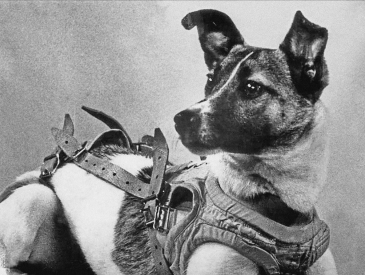
Laika. Wikipedia photo.
On this day 60 years ago, November 3, 1957, Laika, a Soviet dog, became the first Earth creature to orbit the Earth.
Her survival was never expected, since the technology to de-orbit had not yet been developed. Little was known about the impact of spaceflight on living creatures, and some scientists believed that it would be impossible to survive the launch. Laika’s mission was designed to determine whether a living creature could survive the forces of launch and the micro-g environment of space travel.
The Soviets initially claimed that Laika was humanely euthanised by lack of oxygen. However, her actual cause of death was made public in 2002, when it was revealed that the spacecraft overheated, causing her death within a few hours.
Laika was originally a stray found wandering the streets of Moscow. It was thought that such animals were already well adapted to surivial. Three dogs were trained, and Laika was finally selected as the “lucky” winner to make the one-way trip to the final frontier. She was trained by being kept in progressively smaller cages. Before the launch, one scientist took Laika home to play with his children. He reported, “Laika was quiet and charming. I wanted to do something nice for her. She had so little time left to live.”
She was hooked to sensors, and on November 3, 1957, she was launched on her mission from the Baikonur Cosmodrome. When a piece of thermal insulation tore loose, the temperature of the capsule soon reached about 104 °F. Laika died of overheating on about the fourth orbit.
After 2570 orbits, the Sputnik 2 spacecraft, along with Laika’s remains, disintegrated during re-entry on April 14, 1958.
